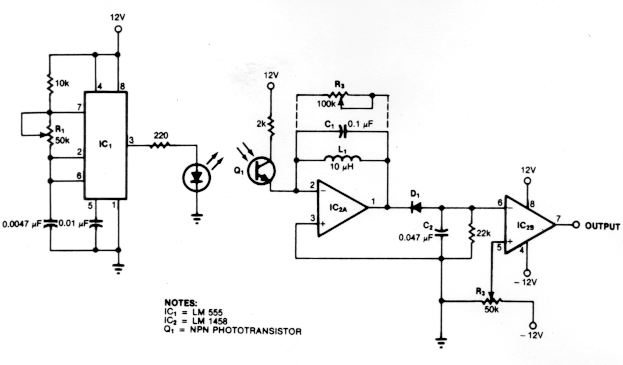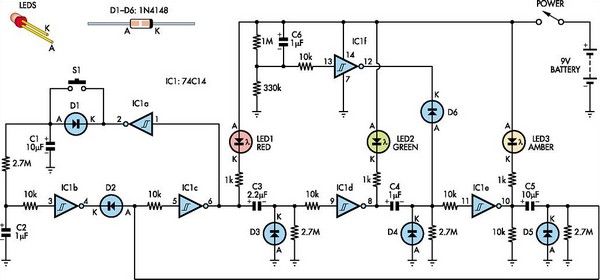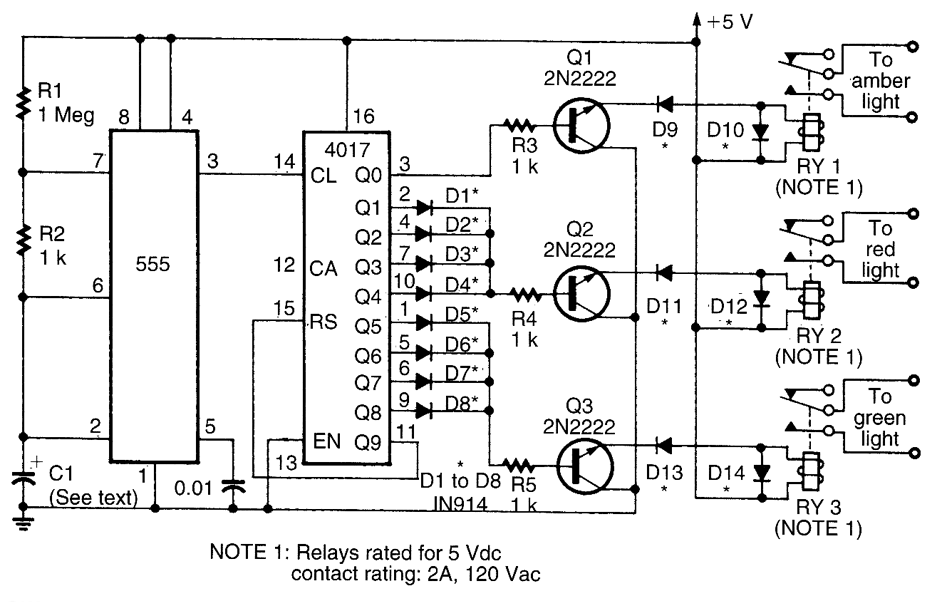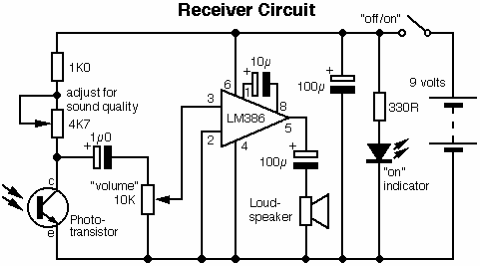
LIGHT DIMMER
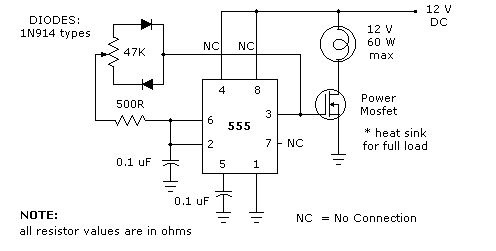
The 555 timer light dimmer schematic circuit is shown in figure 1 below. For the light dimmer to work, the 555 timer is configured as a variable cycle astable oscillator running somewhere around 300 Hz. The power MOSFET used here would be a TO-220 type such as MTP3055E or similar. Note the need for a TO-220 type heat sink for full rated loads. If you look back at the tutorial on 555 timers (figure 2a - modified duty cycle in astable operation) you will note the need for Ra and Rb. Cunningly, this is provided for in our light dimmer circuit by using a 47K potentiometer (often marked 50K).
The 555 timer operates in astable mode, generating a continuous square wave output that can be used to control the brightness of a light source. In this configuration, the duty cycle of the output signal can be adjusted by varying the resistance values of Ra and Rb, which are effectively represented by the 47K potentiometer. The capacitor connected to the timing circuit sets the frequency of oscillation, which is approximately 300 Hz in this application.
The circuit includes a power MOSFET, specifically the TO-220 package type such as the MTP3055E, which is capable of handling higher current loads necessary for driving incandescent bulbs or other resistive loads. The MOSFET acts as a switch that regulates the power delivered to the light source based on the PWM signal generated by the 555 timer.
A heat sink is essential for the MOSFET to prevent overheating during operation, especially at full rated loads. The design ensures that the MOSFET operates within safe temperature limits, enhancing reliability and performance.
In summary, this light dimmer circuit effectively utilizes the 555 timer's astable configuration to create a variable duty cycle output, allowing for precise control of light intensity through the adjustment of the potentiometer. The inclusion of a suitable heat sink for the MOSFET is critical for maintaining optimal performance and preventing thermal failure.The 555 timer "light dimmer" schematic circuit is shown in figure 1 below. For the light dimmer to work the 555 timer is configured as a "variable cycle", astable oscillator running some where around 300 Hz. The power mosfet used here would be a TO-220 type such as MTP3055E or similar. Note the need for a TO-220 type heat sink for full rated loads. If you look back at the tutorial on 555 timers (figure 2a - modified duty cycle in astable operation) you will note the need for Ra and Rb. Cunningly this is provided for in our light dimmer circuit by using a 47K potentiometer (often marked 50K).
In 🔗 External reference
The 555 timer operates in astable mode, generating a continuous square wave output that can be used to control the brightness of a light source. In this configuration, the duty cycle of the output signal can be adjusted by varying the resistance values of Ra and Rb, which are effectively represented by the 47K potentiometer. The capacitor connected to the timing circuit sets the frequency of oscillation, which is approximately 300 Hz in this application.
The circuit includes a power MOSFET, specifically the TO-220 package type such as the MTP3055E, which is capable of handling higher current loads necessary for driving incandescent bulbs or other resistive loads. The MOSFET acts as a switch that regulates the power delivered to the light source based on the PWM signal generated by the 555 timer.
A heat sink is essential for the MOSFET to prevent overheating during operation, especially at full rated loads. The design ensures that the MOSFET operates within safe temperature limits, enhancing reliability and performance.
In summary, this light dimmer circuit effectively utilizes the 555 timer's astable configuration to create a variable duty cycle output, allowing for precise control of light intensity through the adjustment of the potentiometer. The inclusion of a suitable heat sink for the MOSFET is critical for maintaining optimal performance and preventing thermal failure.The 555 timer "light dimmer" schematic circuit is shown in figure 1 below. For the light dimmer to work the 555 timer is configured as a "variable cycle", astable oscillator running some where around 300 Hz. The power mosfet used here would be a TO-220 type such as MTP3055E or similar. Note the need for a TO-220 type heat sink for full rated loads. If you look back at the tutorial on 555 timers (figure 2a - modified duty cycle in astable operation) you will note the need for Ra and Rb. Cunningly this is provided for in our light dimmer circuit by using a 47K potentiometer (often marked 50K).
In 🔗 External reference
